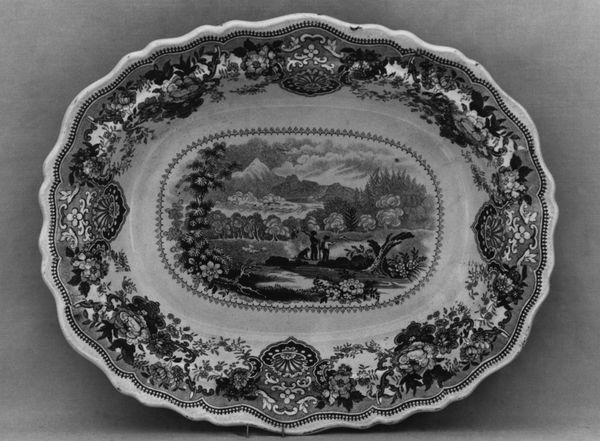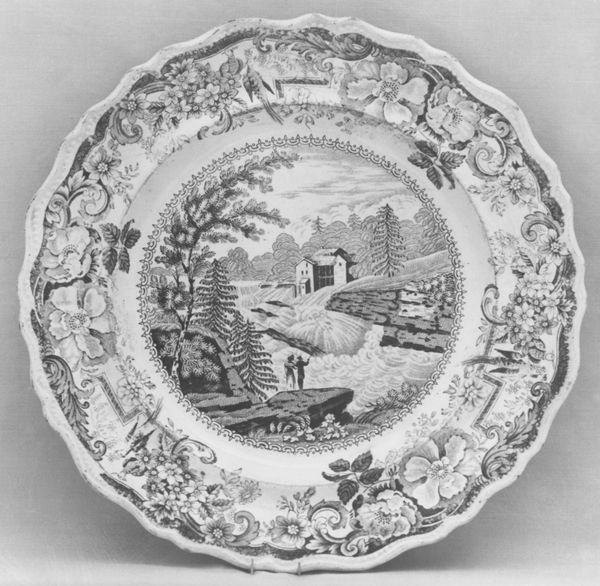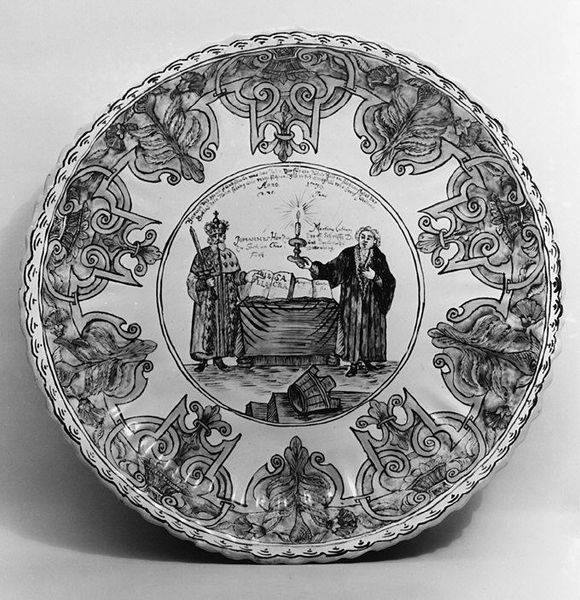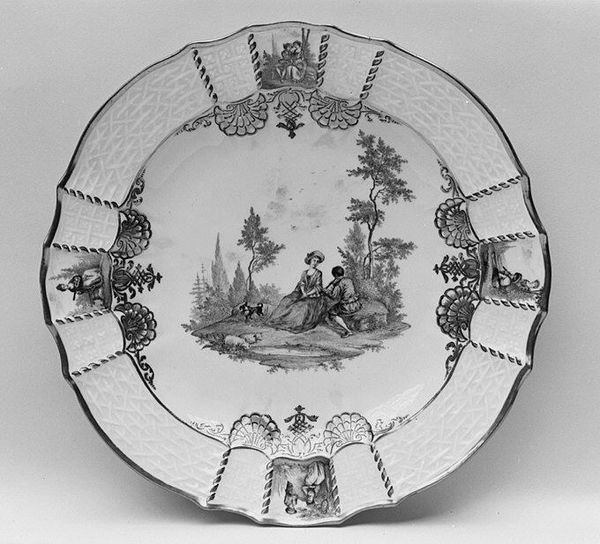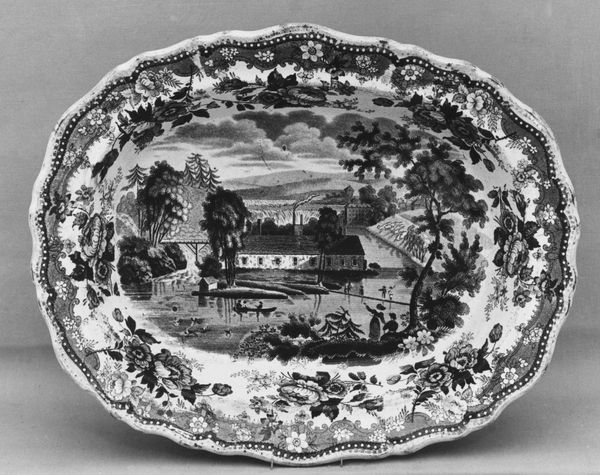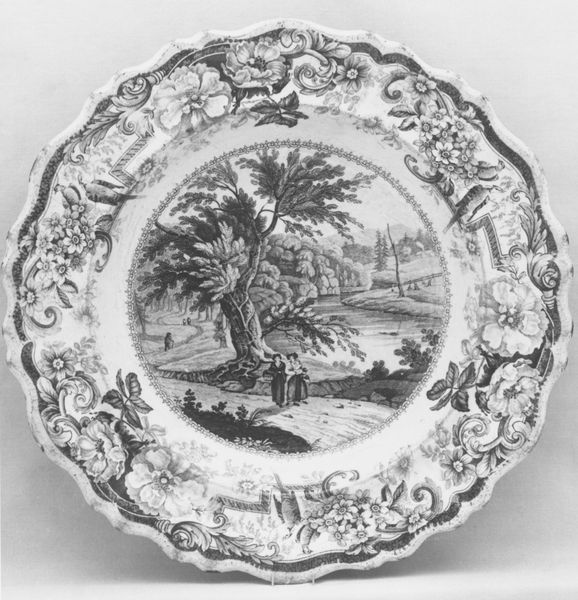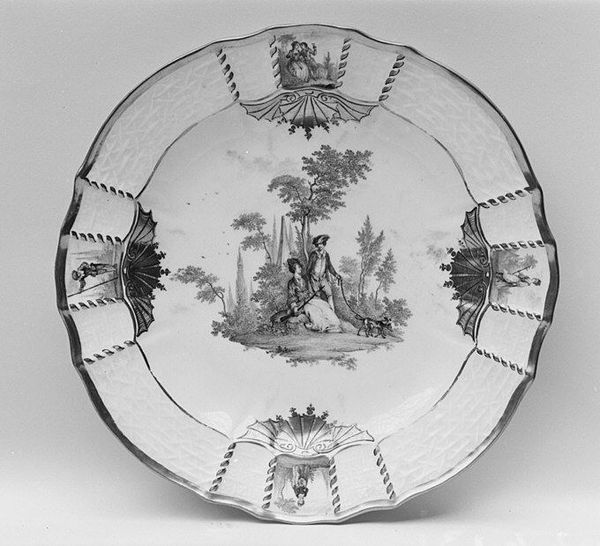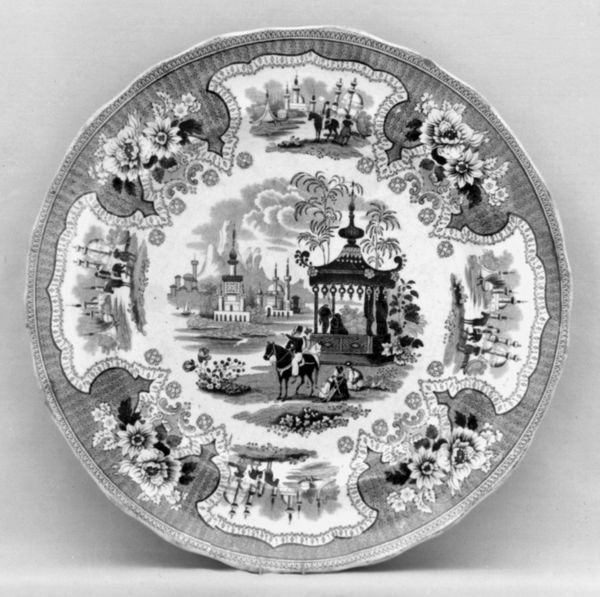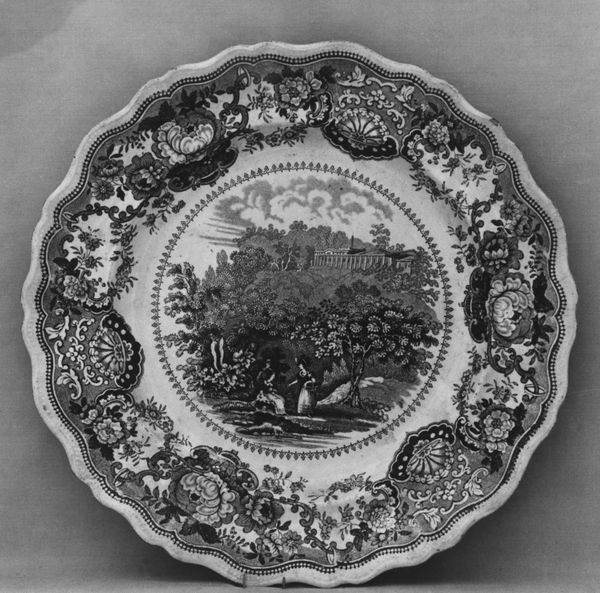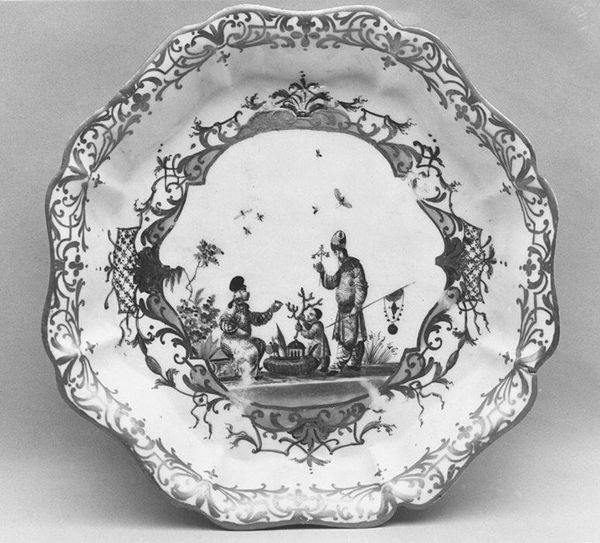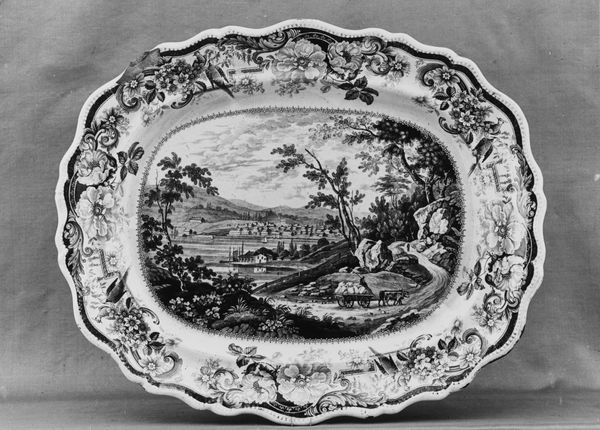
print, ceramic, earthenware
# print
#
sculpture
#
landscape
#
ceramic
#
figuration
#
earthenware
#
stoneware
#
genre-painting
Dimensions: 13 1/2 x 10 3/4 in. (34.3 x 27.3 cm)
Copyright: Public Domain
Curator: Here we have a piece entitled "Platter," created by Thomas Green sometime between 1844 and 1862. It’s currently held in the collection of the Metropolitan Museum of Art. Editor: It immediately strikes me as unsettling, this attempt to domesticate an exotic, likely colonial, scene. The geometric pattern of the border is somehow fighting with the painted narrative within. Curator: Interesting. From a formal perspective, observe how the central image adheres to classical landscape painting conventions despite being printed on earthenware. The careful arrangement of figures creates a clear focal point. Editor: Yes, but think about the labor involved here. Someone designed the image, someone else transferred it, likely several people molded the ceramic itself. And for what purpose? To aestheticize a power imbalance, a literal consumption of another culture. Curator: I see your point. There's certainly an element of Orientalism at play. But I would also emphasize the sophistication of the printmaking, its ability to translate painterly depth onto a functional object. Notice how the scale of the figures relative to the palm trees creates a sense of spatial recession. Editor: And whose dinner was served on this? We can’t ignore that this isn’t just an aesthetic object; it's part of a historical material culture. Its survival gives insight to the rise of industrial processes meeting demands for an exotic flair during its production era. Curator: A fair challenge. It underscores the piece's ambivalence. Is it beautiful? Yes, undeniably. Is it implicated in a problematic historical narrative? Also, yes. Editor: Ultimately, it's a provocative piece, isn't it? A seemingly decorative object laden with the weight of colonial history, the mark of industry. It encourages us to think critically about what and whom we celebrate through the objects we surround ourselves with. Curator: A thought-provoking point to end on. A harmonious reminder of both form and force.
Comments
No comments
Be the first to comment and join the conversation on the ultimate creative platform.
